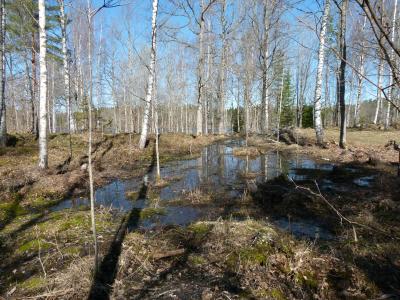Background

In lakes and larger ponds fish are often the top predator whereas smaller ponds which could be temporary cannot be inhabited by fish. In ponds without fish insects predators are of great importance. Invertebrate predators, however, often immigrate after many of their preys have already gone through their life stages in which they need to live in water. Therefore the predation pressure is low in temporary ponds. In this project the backswimmer Notonecta glauca L. (Hemiptera: Notonectidae) and the diving beetles Rhantus frontalis Marsham, R. exsoletus Forster and Acilius canaliculatus Nicolai (Coleoptera: Dytiscidae) are examples of common insect predators in Swedish waters.
The size of the waters is of great importance since mosquito larvae may colonize very small, temporary waters, for example car tyres and flower vases, where predators usually are less common.
If there are several prey species which share the same predator one species may benefit from the others if the predator consumes more of the other species. On the other hand a prey choice experiment with larval Agabus shows that a preference for mosquito larvae may decrease the impact of which prey type is most frequent. This study investigated what the predators prefer to consume when presented with mosquito larvae and other prey types which are common in their natural habitat. The immigration of the predators R. exsoletus and R. frontalis as well as mosquito larvae into small puddles of two sizes was also studied.
Responsible for this page:
Director of undergraduate studies Biology
Last updated:
05/29/13
